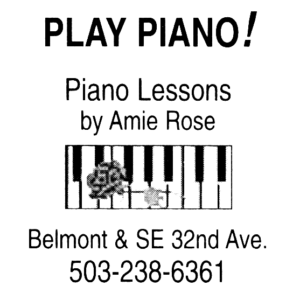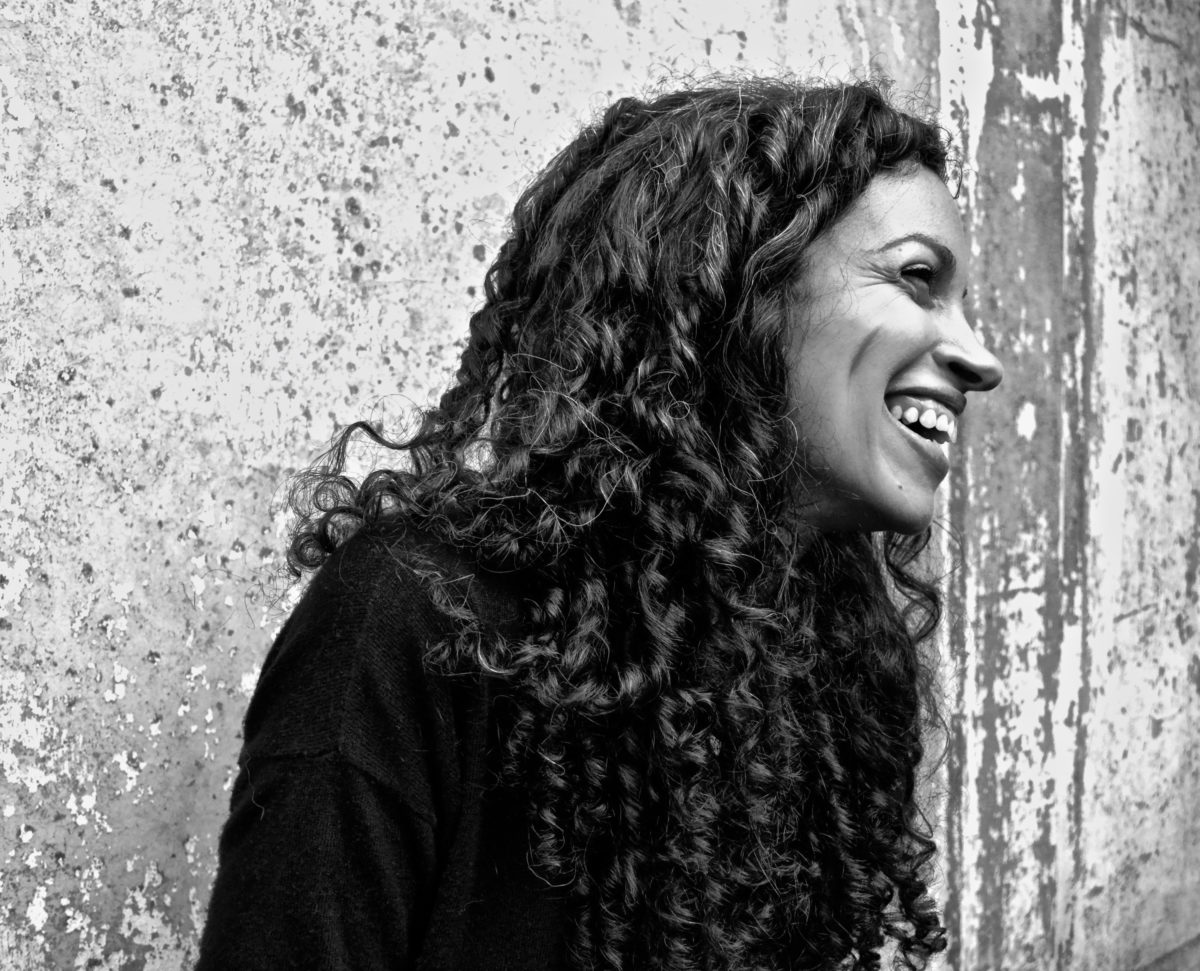Ashley Toliver helps organize the weekly kid-centered March for Black Lives that starts at the Sunnyside Environmental School on Tuesday evenings, alongside her friends Chenoa Knight, Jamie Newell, Tiffany Houston, and Destiny Lane. A published poet, she lives with her partner, Joseph Mains, three blocks from the school, where their daughter Djuna (7) is in second grade. (Mains’ son, Ovid, also attends Sunnyside Environmental School and his daughter Onnavah is a sophomore at Franklin High School.) Toliver’s poetry collection, Spectra, won the Oregon Book Award for poetry earlier this year. She also teaches poetry writing workshops at the Attic Institute.
How long have you lived in Sunnyside? We’ve lived in this place for 3 1/2 years. When I first moved to Portland (about 13 years ago now), I lived on SE 32nd and Grant. Then I lived in Northeast Portland. I was so excited when we finally moved back to this neighborhood!
Do you rent or own? Rent. I was not in a position to buy at that time, but I dreamt about it.
What do you love about Sunnyside? One of the things I love most are the gardens. You just walk down any street and people have these absolutely beautiful gardens that seem to be gorgeous all year round!
What’s one thing you would love to see change about Sunnyside? Housing prices. The cost of living is a barrier to entry in this neighborhood. And more people of color, I think, would be phenomenal. It’s hard to have a daughter who is half black and there aren’t a whole lot of people at her school who look like her.
Tell me about the Sunnyside marches.
Typically we have an indigenous group, Awakening Thunder, and they play drums as people are filtering in. They start at 5 p.m. with chalk drawing and sign-making, so kids can show up and do that. A group called Resistance Assistance brings pizza and snacks. At around 5:30 p.m., we have a few speakers, one of which is always a kid. Sometimes they’ll read a poem they wrote, or share lyrics from a song, or speak about an experience.
At our highest, I’d say we had about 1,000 people. That was the first one—pretty close to the murder of George Floyd. But we usually have 100 people or so. After the first one, I don’t think Jamie had any further plans, and I was like, “This is amazing, we should totally keep doing it!” We’ve got escorts—there are ten of them—who do security for us and help block off the streets. They’re volunteers—folks who believe in BLM. We have a medic who is there every Tuesday in case anyone skins her knee. So much beauty has come out of all of this.


